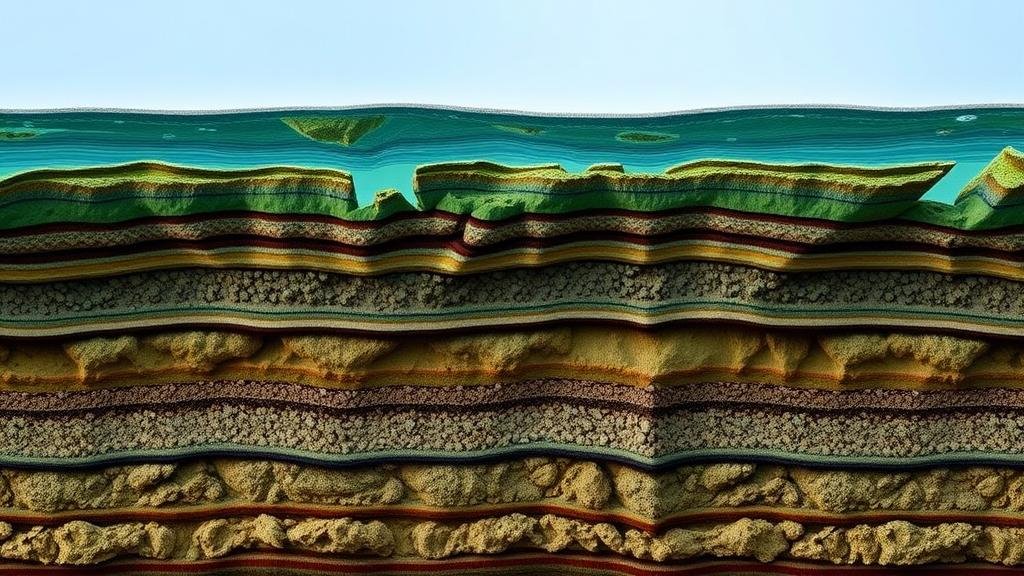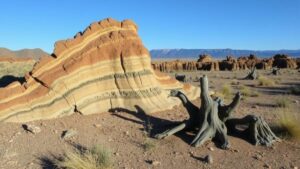From Fossilized Bones to Ancient Ecosystems: Unearthing the Past in Layered Sediments
From Fossilized Bones to Ancient Ecosystems: Unearthing the Past in Layered Sediments
Rockhounding and mineral collection offer enthusiasts the chance to engage with the Earth’s history in a tangible way. Among the treasures found in layered sedimentary rocks are fossilized bones, which provide invaluable insights into ancient ecosystems. Understanding how these layered deposits form and what they contain will enhance your appreciation for fossil hunting and mineral collecting.
Understanding Sedimentary Layers
Layered sediments are formed through processes such as erosion, deposition, and lithification. Over millions of years, materials from the Earth’s surface are transported by water, wind, and ice, accumulating in various environments like riverbeds, lakes, and oceans. This layering not only captures the chronological record of geological events but also preserves organic materials like skeletons and plant remains.
- Depositional Environments: These can include rivers, deltas, lakes, and marine settings. Each environment produces unique sediment types–marine deposits might contain chalk while river deposits often include clays and silts.
- Buoyancy and Bacterial Action: As organic debris sinks, it can become incorporated into sediments, aided by bacteria that decompose some materials and enhance the preservation of others.
The Significance of Fossils
Fossils tell the story of life on Earth, providing a glimpse into ecosystems that existed millions of years ago. Paleontology–a science devoted to the study of fossils–utilizes these remnants to reconstruct environments and understand evolutionary processes. For rockhounds, fossils are not only collectibles but are critical indicators of the age and conditions of the surrounding rock layers.
- Index Fossils: These are fossils of organisms that were widespread but only lived during a specific time period, thereby assisting scientists in identifying the relative age of the layers.
- Paleoelectrical Properties: Certain fossils can alter the electrical properties of surrounding sediment, aiding in the detection of oil and gas deposits when examined in core samples.
Layered Rock Formations and Their Composition
Different types of sedimentary rocks provide rich information regarding the formation processes and the ecosystems they arose from. Each layer may be composed of varying materials and thickness, indicating different depositional settings over time.
- Sandstone: Typically formed from quartz grains cemented together, sandstone often contains fossil traces and can reveal ancient desert landscapes.
- Limestone: Formed primarily from calcite and often contains marine fossils, limestone can indicate former ocean or lake environments.
Identification Techniques for Collectors
For the rockhound eager to seek out fossils and minerals, developing identification skills is crucial. Consider these techniques:
- Field Guides: Carry a reliable field guide that covers the geological features of your area, including common fossils and sediment types.
- Professional Assistance: Attending guided fossil hunts or workshops can provide insight into identifying and locating specimens.
Practical Tips for Collectors
As you embark on your fossil hunting adventures, here are some practical tips to maximize your success:
- Know Your Location: Research areas known for fossil beds. Certain state parks or geological sites may allow collection under specific regulations.
- Right Tools: Invest in quality tools such as a hand trowel, chisels, and safety goggles to protect yourself when excavating fossils from rock.
- Ethical Collecting: Always adhere to local laws regarding fossil collection. Many public lands and state parks prohibit removal of materials.
Conclusion
Collecting fossils and minerals from layered sediments is not just a hobby; it is a journey into understanding the Earth’s past. By studying the sedimentary processes and the fossils they harbor, collectors become custodians of history, preserving the legacy of ancient ecosystems. Take the time to learn about the surroundings, utilize identification techniques, and practice ethical collecting methods for a rewarding experience.
Remember, every rock tells a story. Unearth the past, and you might just dream of the ancient creatures that once roamed the Earth, frozen forever in the stones you hold.



